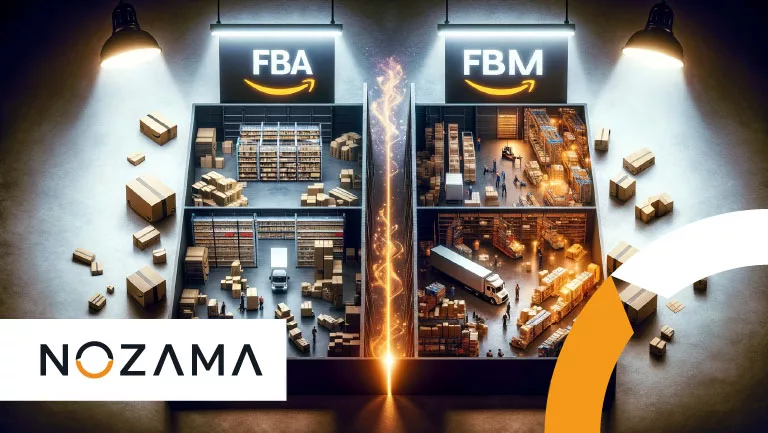
10 Nov FBA vs FBM: Which logistics model to choose to sell on Amazon?
- Sellers who choose the Amazon Fulfilled Fulfillment (FBA) model will have to pay fulfillment fees from Amazon’s warehouse to the end customer, the monthly storage fee, and other optional services, such as labeling or preparing products in certain categories subject to special treatment.
- Brands that prefer to take care of the entire logistics process (FBM), will assume their costs taking into account the rates they establish for shipments to the customer and that they will negotiate with a transport agency of their choice.
When you start selling on Amazon, one of the main questions you ask yourself is how to manage logistics to optimize your sales and customer service potential as much as possible.
FBA vs FBM, Which Amazon Logistics Model Should I Choose for My Business?
Sellers who open an account on Amazon Seller Central to sell their products can choose to manage the logistics part themselves or delegate it to Amazon itself, being clear about the advantages and disadvantages offered by each model, apart from the associated costs of each.
In addition to the above, other variables must be taken into account, such as the storage capacity of stock, the shipping plan they require or the costs they are willing to assume given their profit margin to assess whether the FBM (Fulfillment by Merchant) or FBA (Fulfillment By Amazon) logistics management strategy suits them.
What are the costs of the Amazon Fulfilled Logistics (FBA) model?
Sellers who decide to work with the Amazon-fulfilled (FBA) model will have to pay a fulfillment fee per unit and a storage fee, which is related to the volumetric space they use within their warehouses. It should also be noted that there are also fees for optional services that include returns, cancellations, labeling and packaging and are charged for each unit.
The fulfillment fee has a fixed cost per unit depending on the size and weight of the product, so it is important to add this data correctly once the detail page is configured on the platform to avoid errors or future cost overruns. This shipping cost will also depend on whether it is a local or international shipment, or whether the product is eligible and eligible for the Small & Light Goods program, which will allow you to lower these costs.
On the other hand, the fee for storing inventory depends on the cubic space occupied in Amazon’s warehouses.
And what about expenses in the FBM logistics model?
In the event that the seller decides to manage the orders with their own logistics, they will be able to decide which shipping company they work with and take advantage of the costs offered, taking into account that, in this case, the seller can configure the shipping costs of each product from the Amazon Seller Central platform. deciding whether to take care of them so that they are free for the customer or if they will add them as a separate cost under this concept.


